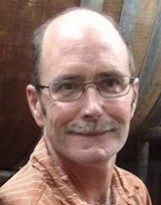 Our next meeting is October 12th at 7PM in the Student Union building on the Cochise College campus. At this meeting, Dr. Eric Pearce will give his presentation on “Space Situational Awareness.” He will discuss how the network of telescopes and radar systems to keep track of the satellites and other manmade objects currently in orbit around the Earth was developed and what purpose it serves.
Our next meeting is October 12th at 7PM in the Student Union building on the Cochise College campus. At this meeting, Dr. Eric Pearce will give his presentation on “Space Situational Awareness.” He will discuss how the network of telescopes and radar systems to keep track of the satellites and other manmade objects currently in orbit around the Earth was developed and what purpose it serves.
Dr. Pearce, who joined the Steward Observatory at the University of Arizona in 2016, has primarily focused his research on the development of advanced systems and astronomical techniques specifically optimized to discover, track and characterize artificial earth-orbiting satellites.
He came to Tucson from Pasadena, California, where he was the Telescope Group Lead at the Giant Magellan Telescope (GMT). Prior to that assignment, Dr. Pearce spent over 25 years working at the MIT Lincoln Laboratory developing ground-based optical telescope systems for tracking and characterizing satellites for the U.S. Air Force. While at the Lincoln Laboratory, he was the Principal Investigator leading the development of the DARPA-sponsored 3.5M Space Surveillance Telescope (SST). Dr. Pearce has two bachelor’s degrees, one in Computer Science and one in Astrophysics, and a Ph. D. in Astrophysics, all from the New Mexico Institute of Mining and Technology. When not behind a telescope, he can be found on his bike, preparing for his next competitive road race.
The United States utilizes a worldwide network of telescopes and radar systems to keep track of nearly 5,000 satellites and 14,000 other manmade objects currently in orbit around the Earth. The ongoing ability to discover, track, characterize and maintain custody of these objects is essential to the safe utilization of space for both civilian and military purposes. This mission is called “Space Situational Awareness,” or “SSA,” and it is the primary responsibility of the U.S. Air Force Space Command.
Academia played an essential role in the early development of American capabilities in this area. In the mid-1950’s, driven by the imminent launch of Sputnik, there was an urgent need to develop and deploy a basic capability to detect, track and determine orbits of the first satellites. Early development of ground-based satellite tracking systems was led by a coalition of academic and government organizations to meet this need. Fred Whipple’s vision of a world-wide monitoring network ultimately led to development and deployment of a unique astrographic telescope, the Baker-Nunn, to 15 sites around the world and the first data processing center which turned optical observations into real-time data and analysis of future orbits of Sputnik and the other satellites that followed.
Today, the UA and other academic institutions are re-engaging with the SSA community to address the future challenges of maintaining awareness of orbiting satellites and other objects, to educate a new generation of professionals on these critical elements, and to re-examine the capabilities of the astrograph given the modern commercial telescopes and scientific grade cameras available today.
